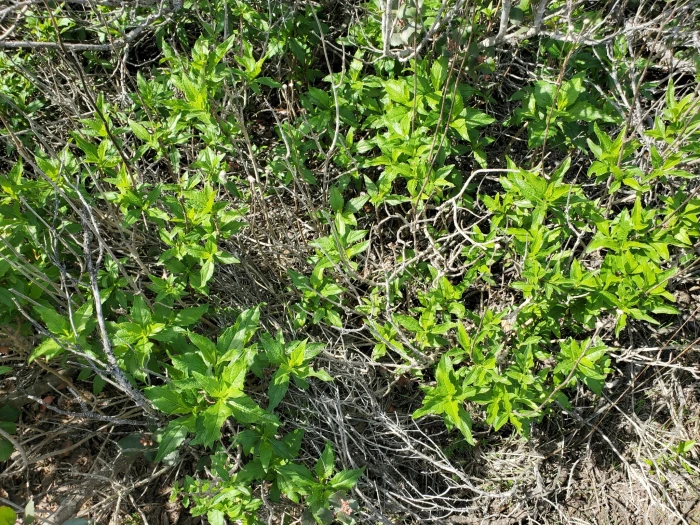Bigleaf Crownbeard
(Verbesina dissita)
Bigleaf Crownbeard (Verbesina dissita)
/
/

John Cowles
CC BY 4.0
Image By:
John Cowles
Recorded By:
Copyright:
CC BY 4.0
Copyright Notice:
Photo by: John Cowles | License Type: CC BY 4.0 | License URL: http://creativecommons.org/licenses/by/4.0/ | Rights Holder: John Cowles | Publisher: iNaturalist | Date Created: 2024-03-17T11:33:15-07:00 |

























Estimated Native Range
Climate Requirements
| • Precipitation | 11" - 13" |
| • High Temp. | 78°F - 87°F |
| • Low Temp. | 42°F - 44°F |
Summary
Verbesina dissita, commonly known as bigleaf crownbeard, is a perennial subshrub native to coastal sage scrub and chaparral habitats of northern Baja California and a small section of the Southern California coast near Laguna Beach. It typically grows from 20 inches to over 3 feet in height and features large, green, oval leaves. The plant is adorned with sunflower-like yellow flowers that bloom from late summer to fall, adding a splash of color to the landscape. The flowers are showy and attract a variety of pollinators.
Bigleaf crownbeard is valued for its bright, cheerful flowers and its role in supporting local ecosystems. It is often used in restoration projects within its native range to combat habitat destruction and erosion. In cultivation, it requires well-drained soils and full sun to part shade conditions. While it is drought-tolerant once established, additional watering can promote more vigorous growth and flowering. Due to its threatened status, it is not commonly found in the horticultural trade, but when available, it can be used in native plant gardens or as part of a pollinator-friendly planting. Gardeners should be aware that it may require protection from invasive species and over-collection.CC BY-SA 4.0
Bigleaf crownbeard is valued for its bright, cheerful flowers and its role in supporting local ecosystems. It is often used in restoration projects within its native range to combat habitat destruction and erosion. In cultivation, it requires well-drained soils and full sun to part shade conditions. While it is drought-tolerant once established, additional watering can promote more vigorous growth and flowering. Due to its threatened status, it is not commonly found in the horticultural trade, but when available, it can be used in native plant gardens or as part of a pollinator-friendly planting. Gardeners should be aware that it may require protection from invasive species and over-collection.CC BY-SA 4.0
Plant Description
- Plant Type: Shrub
- Height: 3-6 feet
- Width: 2-4 feet
- Growth Rate: Moderate
- Flower Color: Yellow
- Flowering Season: Spring, Summer
- Leaf Retention: Deciduous
Growth Requirements
- Sun: Full Sun, Part Shade
- Water: Medium, High
- Drainage: Medium, Slow
Common Uses
Bee Garden, Low Maintenance, Showy Flowers, Water Garden
Natural Habitat
Coastal sage scrub and chaparral habitats of northern Baja California and a small section of the Southern California coast near Laguna Beach
Other Names
Common Names: Fewflower Crownbeard, Big-Leaved Crown-Beard, Disjunct Crownbeard
Scientific Names: Verbesina dissita
GBIF Accepted Name: Verbesina dissita